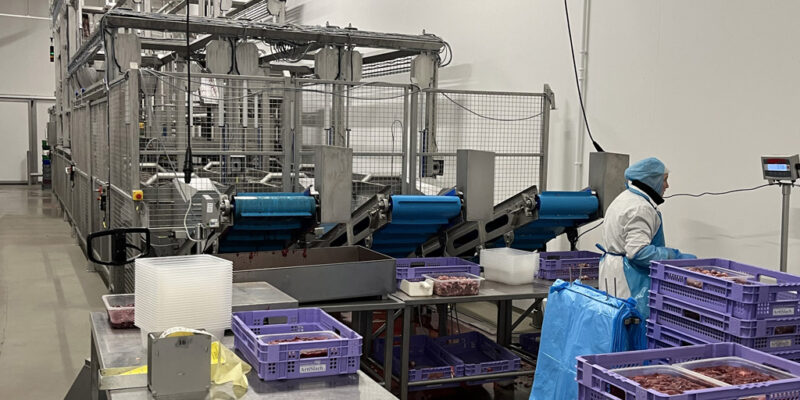INDIRECT COOLING SYSTEM FOR CHICKEN ORGANS AFTER SLAUGHTERING
Thermal Process Systems is primarily active in the field of retort processing, including pasteurization, sterilization, cooking, and cooling. However, we are also adept at handling various thermal processing needs, particularly when customers seek innovative, “out-of-the-box” solutions. Our creative engineering approach enables us to assist in many areas of cooling as well. In a specific project, we took an earlier step when the same customer approached us with a challenge a few years ago. They operate a poultry slaughterhouse and sell chicken organs for human consumption. Due to food safety standards and changing legislation, the traditional method of cooling these organs is too slow. Typically, the market cools the organs by placing them in trays in a cooling room, which means cooling to below 4°C takes at least a day. This results in loss of quality and does not comply with current European legislation. Alternatively, some use running transport belts with the organs in the chicken cooling room, but this method poses a high risk of cross-contamination. These methods are unsuitable for producing for human consumption. Moreover, even for use in the pet food industry, maintaining human-level standards is highly advised, as improper microbiological conditions of the organs could lead to recalls.
Recognizing this, Thermal Process Systems faced a challenge and found a solution in indirect cooling. In this method, the stainless steel wall of a transporter, in this case, a transport screw, was cooled with a cooling liquid, such as ice water or glycol water, to lower the temperature and thus remove heat from the organs, including livers, hearts, stomachs, and other parts. This principle proves effective for many applications, reducing cooling time from about 20 hours to just 1 hour—a significant efficiency gain. This means the product can be directly packed, and handling after slaughtering is minimized. Based on this initial success, industrial-sized machines were developed, installed, and integrated into the day-to-day operations of the slaughterhouse.
Although this solution addressed the issues of temperature and time, cleaning a standard transport screw proved time-consuming, presenting a new challenge. To address this, Thermal Process Systems innovated further by altering the placement of the screws in the system, without sacrificing the initial benefits. New systems were introduced where the screws can be lifted out of the body, reducing cleaning time from hours to 15 minutes—a substantial difference in cost and production efficiency. With the introduction of this new technology, the capacity has been further increased, and the complete system, from the transfer from the slaughter line to the filling of the final packaging, has been implemented.
This is just one example of how Thermal Process Systems can provide highly customized and innovative solutions.

